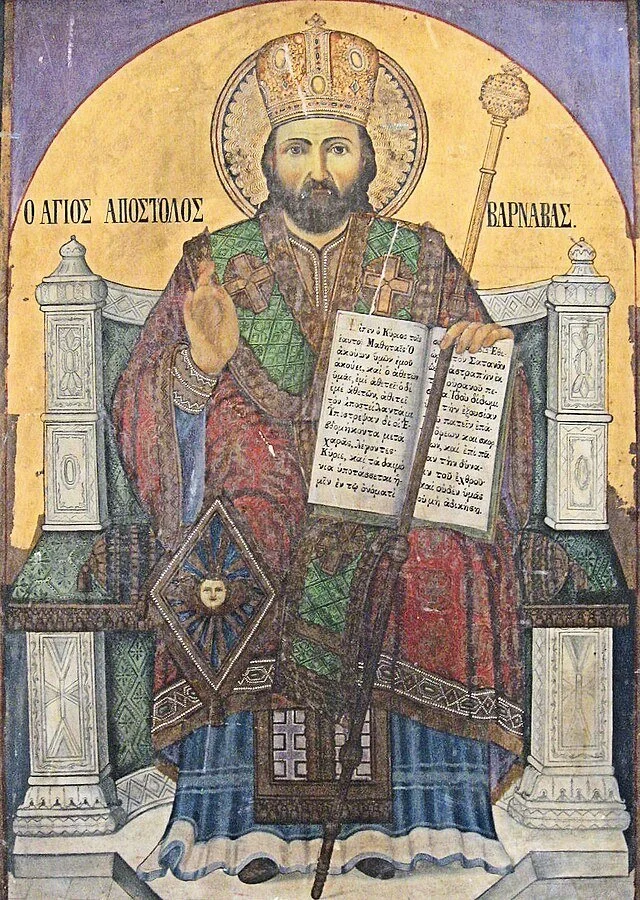What is a Saint & What is a Martyr
Saint Stephen - First Martyr
Early on the term became restricted to men and women of eminent holiness of life. In its strictest ecclesiastical usage it applies only to those who have distinguished themselves by heroic virtue and who, after the scrutiny of the Church, have been declared saints by a solemn judgment of the pope. The juridical consequence of such declaration entitles the person to receive general veneration (not adoration) in the Universal Church. The earliest class of saints to receive distinct recognition was the martyrs. The name confessors as in confessor of the faith originally applied to those who evinced signal courage and constancy in professing the faith, but now refers to male saints who are not martyrs or sufferers for the faith. Women are venerated either as virgins, virgin-martyrs, or as widows.
Saint Paul states, "Very rarely will anyone die for a righteous person, though for a good person someone might possibly dare to die".
ST. ANDREW THE APOSTLE
The first Apostle. Fisherman by trade. Brother of Simon Peter. Follower of John the Baptist. Andrew went through life leading people to Jesus, both before and after the Crucifixion. Missionary in Asia Minor and Greece, and possibly areas in modern Russia and Poland. Martyred on an saltire (x-shaped) cross, he is said to have preached for two days from it.
ST. BARNABAS APOSTLE
Levite Jewish convert, coming to the faith soon after Pentecost, taking the name Barnabas. Though not of the chosen Twelve Apostles, Barnabas is mentioned frequently in the Acts of the Apostles, is included among the prophets and doctors at Antioch, and is considered an Apostle. Companion of Saint Paul who introduced him to the Apostles. Like Paul, Barnabas believed in the Church‘s mission to Gentiles, and worked with him in Cyprus and Asia, but split with him over a non-theological matter. Evangelized in Cyprus with Saint Mark. Founded the Church in Antioch. Subject and possible author of some apocryphal works.
Martyr.
It relates that certain Jews coming to Syria and Salamis, where Barnabas was then preaching the gospel, being highly exasperated at his extraordinary success, fell upon him as he was disputing in the synagogue, dragged him out, and stoned him to death.
ST. BARTHOLOMEW THE APOSTLE
(Most scholars today identify Bartholomew as Nathanael)
One of the Twelve Apostles. Probably a close friend of Saint Philip; Bartholomew’s name is always mentioned in the Gospels in connection with Philip, and it was Philip who brought Bartholomew to Jesus. May have written a gospel, now lost; it is mentioned in other writings of the time. May have preached in Asia Minor, Ethiopia, India and Armenia; some one did, leaving behind assorted writings, and local tradition says it was Bartholomew.
Martyr.
Azerbaijani Christians believe that in the area near the Maiden Tower, the apostle Bartholomew was crucified and killed by pagans around 71 AD.
ST. JOHN THE APOSTLE
Son of Zebedee and Salome. Fisherman. Brother of Saint James the Greater, and called one of the Sons of Thunder. Disciple of Saint John the Baptist. Friend of Saint Peter the Apostle. Called by Jesus during the first year of His ministry, and traveled everywhere with Him, becoming so close as to be known as the beloved disciple. Took part in the Last Supper. The only one of the Twelve not to forsake the Saviour in the hour of His Passion, standing at the foot of the cross. Made guardian of Our Lady by Jesus, and he took her into his home. Upon hearing of the Resurrection, he was the first to reach the tomb; when he met the risen Lord at the lake of Tiberias, he was the first to recognize Him.
During the era of the new Church, he worked in Jerusalem and at Ephesus. During Jesus’ ministry, he tried to block a Samaritan from their group, but Jesus explained the open nature of the new Way, and he worked on that principle to found churches in Asia Minor and baptizing converts in Samaria. Imprisoned with Peter for preaching after Pentecost. Wrote the fourth Gospel, three Epistles, and possibly the Book of Revelation. Survived all his fellow apostles.
John the Apostle is traditionally believed to have died of natural causes at a very old age. He lived long enough to be the only apostle who did not die as a martyr, and he passed away in Ephesus, likely after AD 98.
ST. THADDEUS “JUDE'“ THE APOSTLE
Son of Cleophas, who died a martyr, and Mary who stood at the foot of the Cross, and who annointed Christ’s body after death. Brother of Saint James the Lesser. Nephew of Mary and Joseph; blood relative of Jesus Christ, and reported to look a lot like him. May have been a fisherman. Apostle.
Wrote the canonical Epistle named for him. Preached in Syria, Mesopotamia, and Persia with Saint Simon. Tradition says that he and Saint Bartholomew were among the first to bring Christianity to Armenia. Jude was known to have the gift of healing, and to serve as an exorcist; he could exorcise pagan idols, which caused the demons to flee them and the statues to crumble.
His patronage of lost or impossible causes traditionally derives from confusion by many early Christians between Jude and the traitor Judas Iscariot; not understanding the difference between the names, they never prayed for Jude’s help, and devotion to him became something of a lost cause.
Martyr
Saint Thaddeus, also known as Saint Jude, is believed to have died a martyr's death, likely around the first century AD. Tradition holds that he was clubbed to death and then beheaded. While the exact location of his death is uncertain, it's thought to have been in what is now Syria, possibly in Persia.





